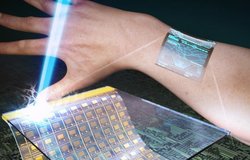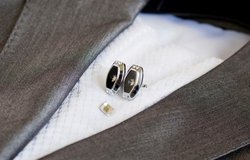New nanotechnology may help production of bendable wearable electronics

(c)iStock.com/enot-poloskun
An international team of nanomaterials researchers from the University of Illinois at Chicago and Korea University have developed a new, ultrathin, bendable and stretchable film that is both transparent and highly conductive to electricity. This film has potential applications in roll-up touchscreen displays, wearable electronics, flexible solar cells and electronic skin.
The transparent flexible film can be bent repeatedly and stretched to seven times its original length.
Senior...










